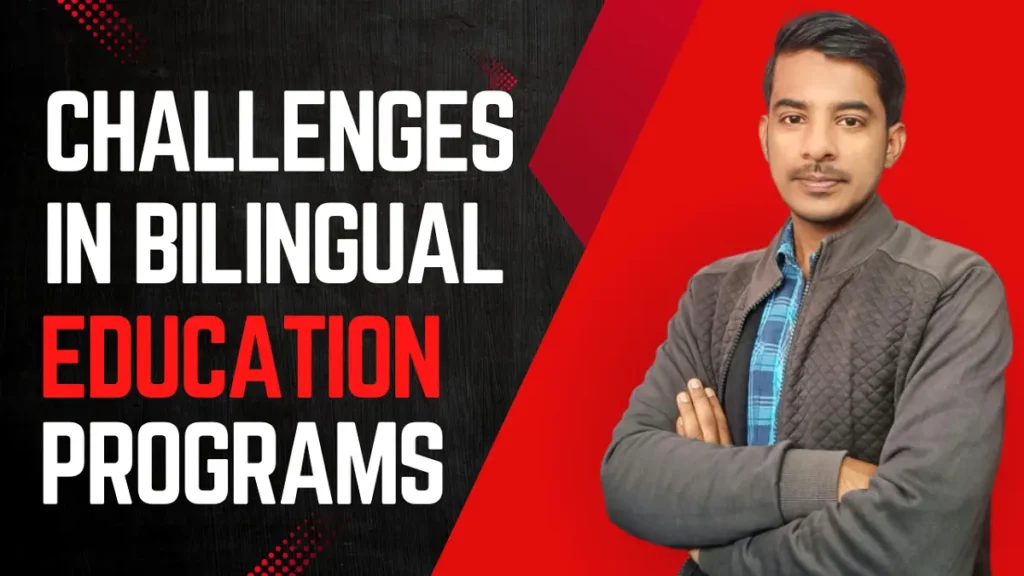Challenges in Bilingual Education Programs: Bilingual education programs have long been recognized as a vital tool for fostering linguistic and cultural diversity in schools. However, these programs are not without their challenges. From disparities in outcomes to systemic barriers, challenges in bilingual education programs continue to affect students from diverse backgrounds, particularly Latino and Latinx communities.
READ ALSO
- The Strategic Importance of the Chagos Islands in Global Geopolitics.
- Warren Buffett latest donation in 2024
- Why is Walmart Walking Back DEI?
- White House Chief of Staff Susie Wiles Salary 2024?
- PAN 2.0 Project: Tax Services Made Simple and Secure.
The Importance of Bilingual Education : Challenges in Bilingual Education Programs
Bilingual education offers significant benefits for students, particularly those from immigrant or minority backgrounds. It promotes language preservation, academic success, and cultural pride. However, challenges in bilingual education programs can undermine these goals, leading to uneven academic outcomes for native Spanish speakers compared to native English speakers.
Laura C. Chávez-Moreno, an assistant professor at UCLA, highlights these issues in her research. She found that while dual language programs aim to bridge gaps, their structure sometimes reinforces racial and linguistic inequities. For example, native Spanish speakers often face more difficult proficiency tests compared to their English-speaking counterparts. This disparity exemplifies one of the key challenges in bilingual education programs.
Structural Barriers in Dual Language Programs
Dual language programs are often seen as the gold standard for bilingual education, yet they are not immune to flaws. Chávez-Moreno observed that while these programs aim to promote equality, Latino students often struggled to achieve the coveted “biliterate” endorsement on their diplomas. This highlights systemic challenges in bilingual education programs that disproportionately affect students based on race and language background.
Additionally, the curriculum sometimes disconnects from its cultural roots. Many programs focus primarily on language acquisition, neglecting the rich history and cultural significance tied to bilingual education. This disconnect represents another significant challenge in bilingual education programs, as it fails to affirm students’ cultural identities.
Racial Disparities in Educational Outcomes
One of the most pressing challenges in bilingual education programs is the perpetuation of racial disparities. Chávez-Moreno’s research revealed that schools often distribute resources and opportunities unevenly, benefiting white, non-Latino students more than their Latino peers. This systemic bias reinforces existing inequalities, making it harder for minority students to thrive academically.
For instance, native Spanish speakers in bilingual programs were less likely to excel academically compared to native English speakers. These outcomes reflect broader challenges in bilingual education programs, where outdated testing methods and resource allocation hinder true equity.
Cultural Relevance in Bilingual Education
Another critical issue is the lack of cultural relevance in bilingual education. While dual language programs were initially rooted in the Chicano movement’s push for ethnic studies, many modern programs have strayed from this foundation. Chávez-Moreno argues that this shift is one of the significant challenges in bilingual education programs, as it limits students’ opportunities to connect with their heritage.
For students to fully benefit from bilingual education, programs must go beyond language instruction. Incorporating lessons about race, culture, and social justice can create a more inclusive and affirming environment. Addressing these challenges in bilingual education programs requires a commitment to culturally relevant teaching practices.
Teacher Training and Support
Teachers play a crucial role in overcoming challenges in bilingual education programs. However, many educators lack the training and support needed to address complex issues like race and inequality in their classrooms. Chávez-Moreno notes that while some teachers excel at fostering critical conversations about race, these efforts are often isolated rather than integrated into the program’s structure.
Providing teachers with resources and professional development opportunities is essential to addressing the challenges in bilingual education programs. Educators must feel confident in facilitating discussions about culture, race, and identity to create a more equitable learning environment.
Testing and Academic Measurements
Outdated testing methods are another obstacle in bilingual education. Chávez-Moreno’s research found that proficiency tests for native Spanish speakers were often more rigorous than those for native English speakers. This disparity highlights systemic challenges in bilingual education programs, where assessments fail to account for students’ unique needs and backgrounds.
To address this issue, schools must adopt more inclusive and equitable testing practices. By focusing on students’ strengths rather than their deficits, educators can mitigate some of the challenges in bilingual education programs and promote better outcomes for all learners.
The Way Forward: Overcoming Challenges
Despite the challenges in bilingual education programs, there is hope for improvement. Chávez-Moreno emphasizes the importance of reconnecting bilingual education to its roots in social justice and ethnic studies. Schools must prioritize culturally relevant teaching, equitable resource distribution, and inclusive testing practices to ensure all students can thrive.
Moreover, fostering open dialogue about race and identity in classrooms can help students and teachers alike navigate complex social dynamics. By addressing these challenges in bilingual education programs, educators can create a more inclusive and equitable educational system.
Conclusion: Challenges in bilingual education programs are deeply rooted in systemic inequities, but they are not insurmountable. By recognizing and addressing these issues, schools can better support diverse student populations and promote true equity in education. As Laura C. Chávez-Moreno’s research demonstrates, overcoming these challenges requires a commitment to cultural relevance, teacher support, and systemic change.
Important Link
| Platform | Link |
|---|---|
| Check Now | Click Here |
| Click Here | |
| Click Here |
By tackling the challenges in bilingual education programs, we can create a future where all students, regardless of their background, have the opportunity to succeed.
What are the main challenges in bilingual education programs?
Bilingual education programs face several challenges, including unequal academic outcomes for students from different linguistic backgrounds, a lack of culturally relevant teaching materials, outdated proficiency tests, insufficient teacher training, and systemic inequities that perpetuate racial and language-based disparities.
Why do native Spanish speakers struggle more in bilingual programs compared to native English speakers?
Native Spanish speakers often face more rigorous proficiency testing and less equitable resource allocation. Additionally, some programs fail to adequately address the unique needs of native Spanish speakers, leading to lower academic outcomes compared to their English-speaking peers.
How do bilingual education programs relate to cultural identity?
Bilingual education programs are vital for preserving students’ cultural identities by affirming their native language and heritage. However, when these programs focus solely on language acquisition without integrating cultural history and social justice, they risk losing their cultural relevance.
What role do teachers play in overcoming challenges in bilingual education programs?
Teachers are critical in addressing challenges by fostering inclusive classrooms, facilitating discussions on culture and race, and adapting teaching methods to meet diverse student needs. However, they require proper training, support, and resources to effectively fulfill this role.

